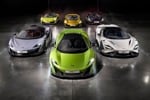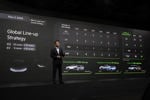By Professor Jim Saker
A few weeks ago, I was asked to speak at a digital marketing conference for practitioners in the motor industry. It was one of those occasions when I felt I was the token academic invited to break up a string of speakers all saying how good their company was and wouldn’t the world be better if everyone was like them.
To be fair, there was some self-reflection, but on the whole it concentrated on how digital and social media activity could support existing activities and practices. There was no suggestion that, as the digital world developed and artificial intelligence grew, there would be any change in the structure or operation of our sector.
My problem is that, unlike the introduction of the web in 2000, I believe ‘digital’ has the potential to radically change, not simply enhance, the way we do business.
Digital retail challenges the existing car dealer structure
Some people have argued that the Rockar model being developed by Simon Dixon and Hyundai is the first initiative that challenges the existing dealer structure.
Although the implementation is different, the concept of the customer doing most of the qualification process online is not that new. Nor is employing non-commission-based female staff new, but calling them ‘angels’ is different and adds a slightly celestial dimension to the operation. Being based in a shopping centre is also new and the initial results appear to be promising.
My concern is that we are underestimating both the opportunities and the challenges digital media and big data will have on not only our everyday lives, but also the automotive sector. Rockar may be innovative, but it is simply the start of a range of potential ideas that are likely to be developed in the next few years.
I am privileged to work in a university surrounded by some very bright and, at times, scary people. One of my colleagues, Prof Tom Jackson, has developed a software package, called Emotive, that analyses the mood and tone in thousands of tweets that are made every day.
One of their most interesting pieces of work involved monitoring the mood of the nation after the 2013 killing of soldier Lee Rigby by Islamic extremists. The analysis showed the obvious sense of grief, anger and shock at the murder.
However, a day later there was a large spike in the measure of happiness, which puzzled the researchers. Why should the mood of the tweets change so quickly? Why should people feel happy about this?
The researchers discovered that this peak of happiness coincided with Rigby’s family saying how proud they were of their son and that they were prepared to forgive the killers.
If this approach had been available at the time of the London riots, for example, the response could have been pre-emptive and the riots may not have taken place. By monitoring the mood of the tweets, it would have been possible to identify a problem starting.
This is of immense interest to the Ministry of Defence and the police. At Loughborough, along with the Kaiser Chiefs, we can now predict a riot. Although this may be very interesting from a security perspective, what relevance does emotion-tracking have for the car industry?
Giving carmakers a data-led approach to public opinion
One of the most interesting applications could be when something goes wrong, for example if a manufacturer issues a large recall.
When such an announcement is made, people comment on social media. Depending on whether the mood swing is marginal or more hostile, the manufacturer can take tailored and proportionate actions.
This technology will eventually get into the home. It always puzzles me why so many car companies sponsor TV programmes. I understand that with ‘time-shifted viewing’ few people watch adverts, but with the sponsorship of a programme you are identifying with the content and sentiment being expressed. People watching the programme will reflect the mood of the show, if it is a downbeat movie, having a bright breezy message from a car sponsor is unlikely to have any real resonance with the viewers.
Similar types of analysis can be done to identify the mood of what people are saying about a car launch or the demise of Top Gear. Being able to measure the mood of the market will help to inform the tone and type of message being made by an organisation.
One of the most interesting pieces of work Loughborough has just completed shows that by measuring changes in the retina it is possible to say whether someone is happy or unhappy even if they are not smiling. By fitting an appropriate camera in a dealership or in a car during a test drive, you could know exactly how well things are going.
In passing, Prof Jackson said you could tell by looking at their eyes whether drivers were happy or not with the road they were driving along. I suggested that you didn’t need cameras and researchers to know how most people feel about the M25!















Login to comment
Comments
No comments have been made yet.